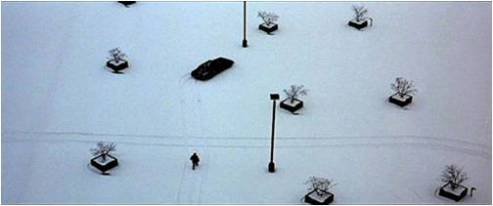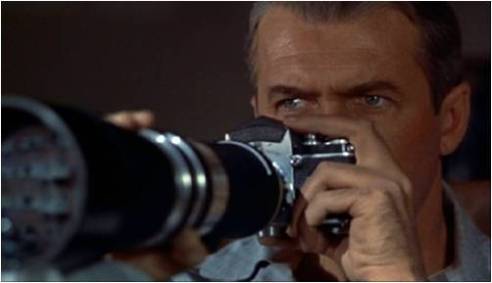A filmmaker is a storyteller in visuals. Story always forms out of one’s imagination and life’s experience. But, to make it communicable to another person the storyteller needs craft. While imagination is inspired, a craft can be taught. It is to be noted that the tradition of training performers in a proper school was always there in India. So, it is more of a baseless prejudice that film art, unlike music or painting, cannot be taught. Further, people have a wrong idea about teaching. As Jean Renoir once wrote, a teacher’s job is to show relations between things. Through a guided tour, a teacher brings multiplicity of real experiences to his students. That can save a lot of learning time.
However, anyone who wants to be a good cinematographer needs rigorous training in some basic steps. These are the building blocks for cinematic story telling – Composition, Exposure, Optics, Lighting, Understanding of Color, Camera Mechanisms, Sensitometry, Pre-production and Post-production processes, , Camera operation and Grip, Set Management and Creative Collaboration on the set.
There are few things besides these that an active cinematographer has to bother about, in his daily work. Finally, everyone learns and becomes sophisticated in the skills through use and practical experience – through problem solving, basically. But, to start, one needs to have good, or at least standard, skill in these ten things. Sometimes, they are called the ten golden steps in cinematography.
Let us examine the steps more closely.
1
In reality, we see things happening around us in a continuous mode. In cinema, the reality is framed. Where the frame ends, space is suddenly cut off. Any story-telling, hence, is essentially made through frames, and more importantly, through arrangement of things in the frame. Actors and set properties can be arranged in different geometric formations in relation to one another, and in relation to the background.
The idea of power, for example, is enhanced by the circular formation in this frame. Even when this is not a wide top shot, it can be seen that the power is projected by the suggestive circle in which people are sitting. The scene presents a grave mood even when the viewer is not aware that it is the control room for war.
Primary shapes, such as circle, square and triangle, either as physical shapes or actors and props in such formation always catch the eye. Just like the shapes, lines and solid forms – sphere, cube, cone and cylinder – pose creative challenge to the viewer’s dynamic mind. Great filmmakers like Eisenstein always knew this, and took it to a height in films like Ivan the Terrible Part I and Part II.
Modern filmmakers take recourse to this when they want a strong emotive utterance without using dialogue or too much physical action. Coen Brothers’ Fargo plays a witness to setting up the atmosphere of chill, business and cold murder through use of lines.
Lines can be vertical like this formation, or diagonal like the car. When the actors and props are in a diagonal arrangement, that gives the frame certain dynamism, and story a certain speed. Changing the shapes and lines in successive shots, produce internal rhythm that helps in engaging the viewer to the story.
When a sense of rest or immobility is to be conveyed, filmmakers use a horizontal line instead. Such a line, parallel to the picture-frame-edges, produces the least internal motion. Viewers tend to connect maximum things to positions of human body in the space. A horizontal line evokes a dead body, or at best a sleeping man, to mind.
Talking of lines, one should remember that lines also psychologically divide a framed space. Film screen space is always rectangular. But the rectangle can be of different widths. This is known as Aspect Ratio, in cinematic terms. Choice of aspect ratio is both functional and aesthetic. Whatever it is, the picture space always retains certain areas of prime importance which the human eye catches fast.
Traditionally, this psychological preference is translated geometrically in the frame. It follows certain visual conventions that in turn depend on visual psychology and viewer-reaction points. In filmmaking, photography and painting, this is known as the rule of the third.
It is interesting to note, when the frame gets wider – a Cinemascope frame, for example – the rule of the fourth follows, quite logically.
The idea came from painting. Visual artists always knew where the viewer’s attention tends to hover maximally, in a square frame. If the painter wanted some face or object to draw viewer’s attention most, they just had to keep them in those particular areas in the frame. With such a calculated approach, interesting storytelling became easy.
Filmmakers quickly took to the same approach. However, motion picture cannot always show a dynamic, harmonic frame, as people and objects keep moving through time. The idea of Key frame came soon as a solution. When important things are happening, or someone is delivering a dialogue, the actor in prominence or an object which the filmmaker wants to highlight, is halted to rest. When someone is at rest, his face can be at one of the nine interesting points of intersection, making the frame visually dynamic and interesting.
It is playing with the viewer’s psychology and expectations finally. A normal human mind always looks for something exciting in the space that is not revealed to him, or revealed partially.
This is why for a solo character in the frame he is normally kept in one of the thirds (left or right third)
Even when it is an Over-the-Shoulder shot, like the frame above, the character who is positioned in preference to the other character, is normally kept in the middle third or one of the side thirds (depending on shot-size and if background is shown properly.)
The idea is inherently embedded in human visual psychology. Man likes mysteries, puzzles. When everything is revealed, the human mind does not have much to work on solving the puzzle. However, when a solo character looks at an off-screen space (space outside the frame), the viewer’s mind wants to know what lies beyond the frame line. Filmmakers like Hitchcock knew this, and played subtly on the basis of normal human expectations.
In this frame from Rear Window, the photographer Hero, Jeffries (acted by Jimmy Stewart), and looks at something off-screen. He points his camera’s long lens to that unseen object too. Naturally, the curious human mind seeks an answer to ‘What lies beyond the frame?”
The answer can only be obtained in the next moment. This is why film is a serial art form, where one composition follows another to answer some question.
Where the form (ie, the composition) makes the content (ie, the expectation) stronger, the storytelling becomes effective.
Filed under: Uncategorized | Tagged: Cinematography, DA, films, movies | 3 Comments »
























